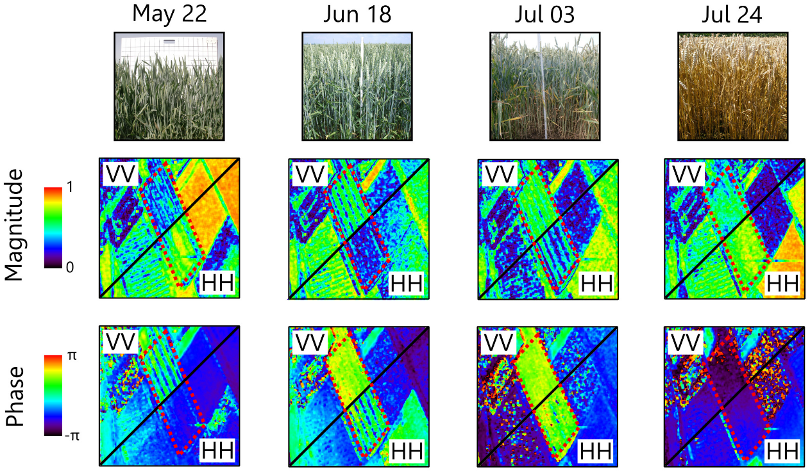Pol-SAR & Pol-InSAR
PolSAR exploits multiple wave polarizations to sense the polarization dependence of the backscattering response of a target and infer additional information about its structural and dielectric properties. It can be used to study the characteristics of vegetation and forest canopy. It can potentially discriminate the contributions from the vegetated layer and the soil by means of polarimetric decompositions. However, the use of different polarizations alone may not provide, in some cases, sufficient information to separate the scattering contributions from the canopy and the ground. Exploiting the sensitivity of the interferometric coherence to polarization, i.e. by employing a technique called Pol-InSAR, can provide further insights into the geo/biophysical properties of a vegetated surface. This technique allows for the quantitative estimation of parameters related to the structure and distribution of scatterers within the canopy (e.g. vegetation height and plant orientation), and the relative scattering contributions from the canopy and the ground.

